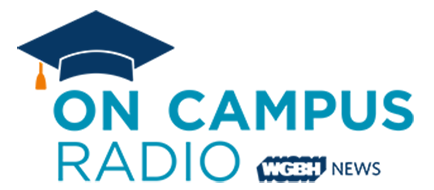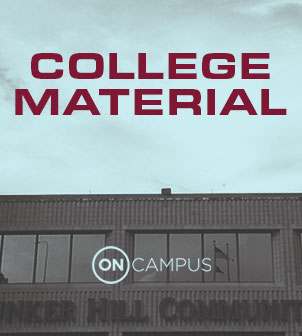After barely more than a year in business, opposite-coast rivals edX and Coursera have become two of the biggest higher-education organizations in the world, with a combined six million registered users drawn to the online teaching they provide.
And why not? The so-called MOOCs, or massive open online courses, offered by the two behemoths based at MIT and Harvard on the East Coast and Stanford on the West combine free education with the convenience of learning at any time or place, alongside with tens of thousands of cyber-classmates at a time in any of 524 courses in all that range from calculus to genome theory, introductory guitar to the science of cooking, Chinese architecture to American national security.
This has seemed the perfect marriage, leading to pronouncements that MOOCs will mean the end of conventional universities and skyrocketing tuition, and even proposals by state legislators to substitute online courses for the in-person kind at public universities.
But the honeymoon may be coming to an end.
What limited research has been done into the effectiveness of online learning has found that it has much higher dropout rates and lower grades than the conventional kind. Proponents of conventional education, which at first seemed unsure of how to respond to the MOOCs craze, now are publicly questioning them at conferences with titles such as, “MOOCs: Revolution or Just Passing Fad?” and “Will MOOCs Pass the Test?” and speakers including prominent education scholars. Employers still prefer hiring applicants with traditional versus online educations, according to a new poll. And even advocates for MOOCs concede that expectations have gotten out ahead of them.
“This whole thing is just a little over a year old,” says Anant Agarwal, the president of edX, a job that has thrust the MIT computer-science professor into the pop-culture limelight with appearances on the likes of The Colbert Report, and who likens the evolution of MOOCs to the 25-year span it took to get from early web-search engines to Google. “We need to give it time. There’s still a long way to go.”
Even as MOOCs remain wildly publicly popular—enrollment in all online courses is up 29 percent since 2010, during a time when the number of students in conventional university courses has declined according to the Babson Survey Research Group—their purpose remains misunderstood, Agarwal and others say.
While edX and others will continue to offer their immensely popular standalone online courses, the broader idea, they say, is largely to find ways of using new technology to improve the quality of education on campuses in what’s known as blended learning. They say that’s one of the main reasons MIT and Harvard are investing $60 million in edX.
“The public perception of MOOCs is that they are courses taken by millions of learners all over the world,” Agarwal says. “But at edX, we’ve been saying all along that we want to take the learning in the large and apply it in the small, on campus.”
This work is in its early stages, with large-scale research just getting under way and some professors who teach MOOCs importing some of the technology—archived lectures, for examples, that students can watch, restart, and watch again—into their real-world brick-and-mortar classrooms.
This combination of MOOC-style technology with conventional teaching has an acronym of its own, a geeky inside joke that’s likely to become as ubiquitous as “MOOC”: the small private online course, or SPOC.
Work has only just begun into determining whether this will help students learn more. But what real-world experience exists so far is raising doubts.
In a study of MOOC-like online courses at community colleges, researchers at Teachers College, Columbia University found that nearly twice as many students dropped out than their counterparts who took the same courses in conventional classrooms. The online students also got lower grades and were less likely to ultimately graduate. And in an experiment at San Jose State University in California, only half of students who were allowed to take MOOCs for credit passed, compared to three-quarters of those in the same courses in conventional classrooms.
That’s because online learning requires self-discipline and motivation, says Amin Saberi, cofounder of another Stanford spinoff called NovoEd, which is betting that MOOCs can only work if students are called upon to do more than watch lectures on their laptops or tablets and check off boxes on online exams.
“A lot of the courses coming online are focused on the most boring parts of education: the talking head and multiple-choice questions,” says Saberi, who says that even he has started and dropped out of other people’s MOOCs after losing interest. “Because of this, for the student, they create a very lonely experience.”
In a new twist on MOOCs, NovoEd offers massive online courses but also organizes online and in-person study group and requires students to work on projects or find living, breathing mentors. Some in a technology entrepreneurship course started their own companies, for instance.
“Education is not just transfer of content,” Saberi says. “We need to bring the students in, motivate them, and create an environment where they can go farther.”
Yet most MOOCs “are basically another form of ‘chalk and talk’ teaching, only online and at a distance,” says Thierry Karsenti, a professor of education at the University of Montreal, which organized an international conference about them. (In French, MOOCs are called cours en ligne ouverts et massifs, or “CLOMs.”)
“Can these enormous numbers really be taught all at once? When there is no actual communication with the students, is it still teaching?” Thierry asks.
It’s too early to say, Agarwal insists. He says MOOCs are accomplishing their objectives of widening access to education and allowing educators to do research into how students learn—what times they like to watch the lectures, where they move forward or get stuck, and other precise details the technology can track. As for their third goal, of improving the quality of learning, he says, that will come with time.
“The challenges of education are so large that our entire community has been seeking a solution, and online learning and MOOCs are seen as a potential silver bullet,” Agarwal says. “Everybody really gets excited about it. But the jury is still out in terms of whether and to what extent purely online education is effective.”
And even their critics say MOOCs have accomplished a lot in their short lives.
“MOOCs have done quite a few good things,” Saberi says. “They’ve started a conversation that, look, we have huge problems in higher education, and about how online technology can help students on and off campus. That doesn’t mean the current MOOCs can solve these problems. They’re a stepping stone, not a solution.”
Earlier: Effectiveness Of MOOCs Stirs Debate About Online Learning










